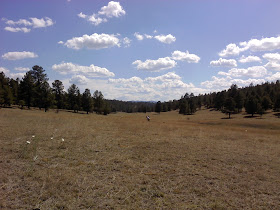How to Build a Fire
How to Build a Fire is a depressing story by Jack London. I'm not going to talk about that. And I'm not going to talk about how to build a campfire either. I'm going to talk about my firefighter refresher training that I took last Friday.
But... umm, wait a second. Didn't I just take four days of fire training? Oh yes, I did. But boss W said I had to take it, and he's the boss, so there I was taking the same exact dang class watching the same videos that I just saw last month.
There was one part that wasn't in my first class, though, and it was one of the most interesting parts of the whole day. One of the meteorologists in my office recorded a powerpoint presentation on five predictive fire factors, and how each of them played out in 2011, one of the most historic fire seasons in our region. The factors are:
Drought
Fine fuels (small stuff, like grass and forbs and baby trees)
Seasonal temperature and precipitation
Spring and early Summer weather patterns
Monsoons
He then provided a history and showed a map of the occurrence of each of these factors in the winter and spring of 2010-2011. The map showed that all of them lined up pretty much perfectly with each other to create greater than normal fire conditions in 2011. The three big fires of last season, the Wallow, Horseshoe II, and and Las Conchas, were all located exactly in the ring of fire.
Next he went on to discuss the conditions for 2012. So far, this year has been cooler with more precipitation, but we are losing snow pack when we should be gaining it. Additionally, the shift to El Nino occurs this year. Fire conditions are dependent on how fast or slow this shift is.
As for the five factors, this is how they are currently playing out this year:
Drought- still continuous
Fine fuels - a more normal amount with some snow compaction
Seasonal temp/precip - a more rapid shift to El Nino is favorable for reducing fire conditions
Weather pattern - more "normal" than last year
Monsoon - wetter across the west and drier across the east (of our region)
Basically, this means it's still up in the air as to exactly how the fire conditions will be this year, but there are indications that it won't be as bad as last year. I wanted to write about all of this because I think it's really interesting. I like weather and climate stuff a lot. Probably more than mapping and geomorphology, although I still love working with soil and plants. I'll try to make my next post have more pictures and less science.






